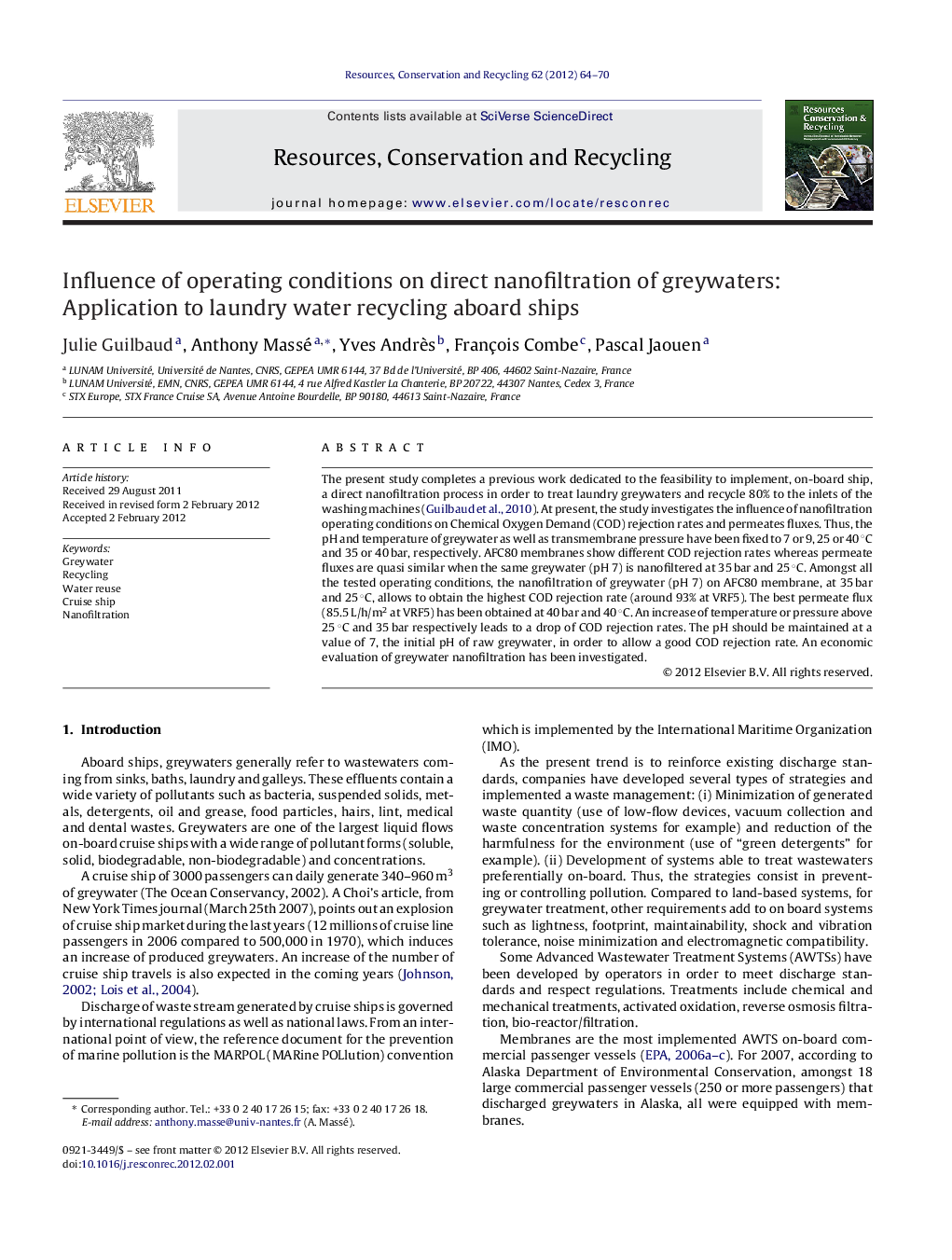| Article ID | Journal | Published Year | Pages | File Type |
|---|---|---|---|---|
| 1063300 | Resources, Conservation and Recycling | 2012 | 7 Pages |
The present study completes a previous work dedicated to the feasibility to implement, on-board ship, a direct nanofiltration process in order to treat laundry greywaters and recycle 80% to the inlets of the washing machines (Guilbaud et al., 2010). At present, the study investigates the influence of nanofiltration operating conditions on Chemical Oxygen Demand (COD) rejection rates and permeates fluxes. Thus, the pH and temperature of greywater as well as transmembrane pressure have been fixed to 7 or 9, 25 or 40 °C and 35 or 40 bar, respectively. AFC80 membranes show different COD rejection rates whereas permeate fluxes are quasi similar when the same greywater (pH 7) is nanofiltered at 35 bar and 25 °C. Amongst all the tested operating conditions, the nanofiltration of greywater (pH 7) on AFC80 membrane, at 35 bar and 25 °C, allows to obtain the highest COD rejection rate (around 93% at VRF5). The best permeate flux (85.5 L/h/m2 at VRF5) has been obtained at 40 bar and 40 °C. An increase of temperature or pressure above 25 °C and 35 bar respectively leads to a drop of COD rejection rates. The pH should be maintained at a value of 7, the initial pH of raw greywater, in order to allow a good COD rejection rate. An economic evaluation of greywater nanofiltration has been investigated.
► Greywater nanofiltration. ► Influence of operating conditions. ► Economic evaluation.
